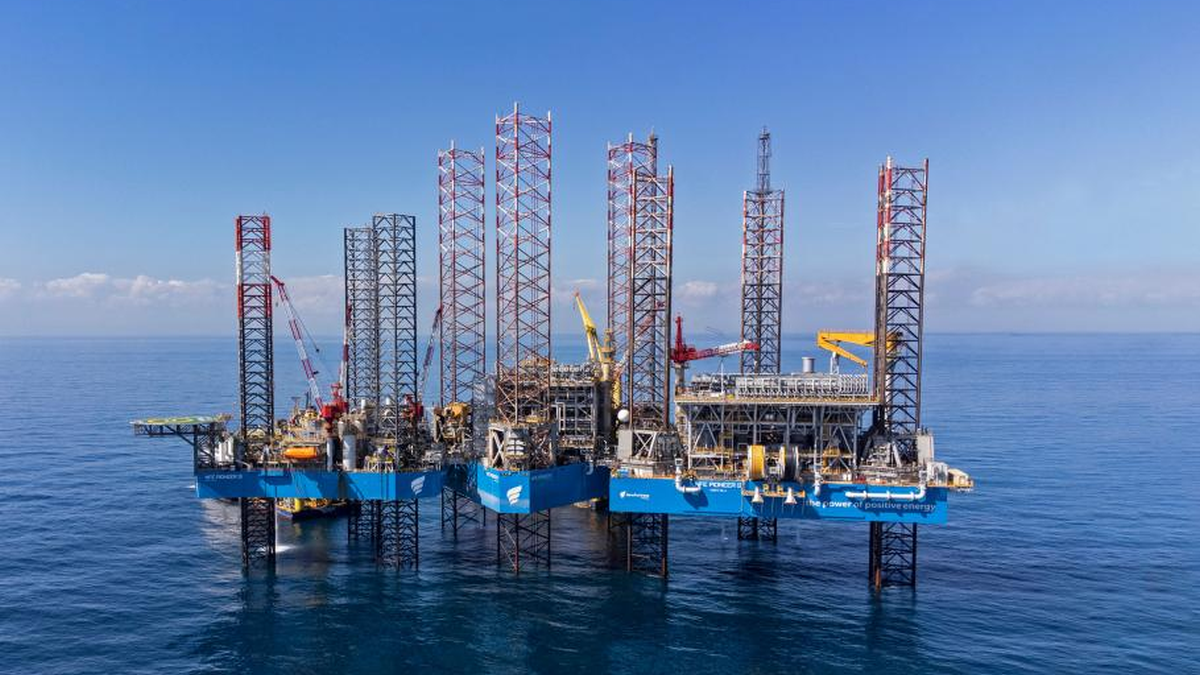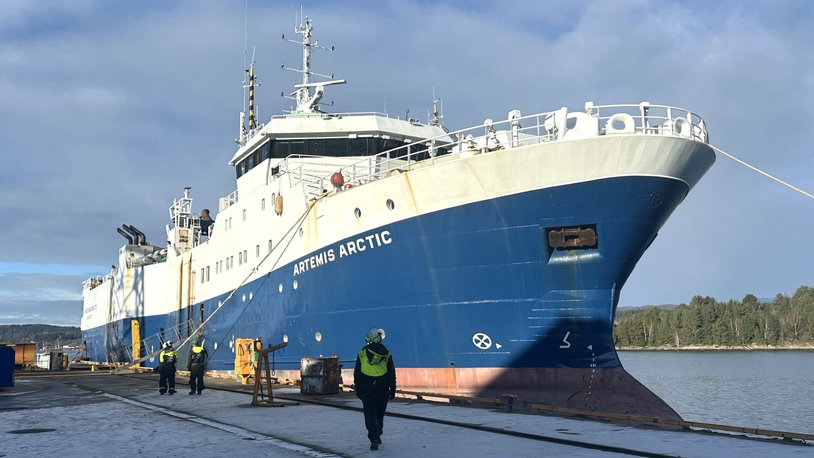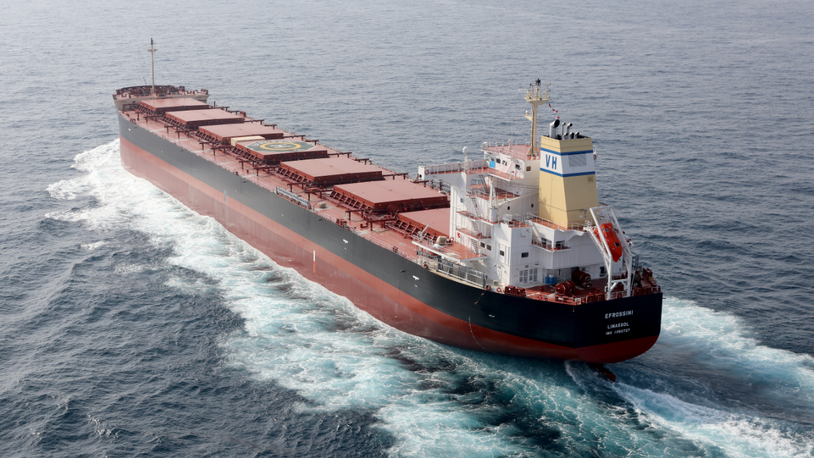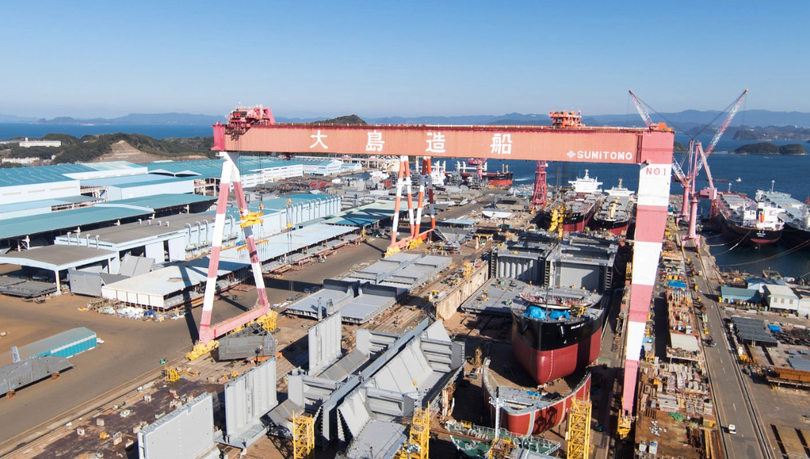Business Sectors
Contents
Satcoms and WiFi are in demand for crew and cargo
Vessel operators are upgrading their satellite communications with either VSAT or L-band services such as Inmarsat FleetBroadband (FB) or Iridium OpenPort to improve crew welfare and vessel operations. L-band services remain the preferred option for most container ship operators, but innovative owners are investing in VSAT or onboard GSM networks and voice over IP (VoIP) technology.
Japanese shipping group Nippon Yusen Kaisha (NYK) decided to invest in KVH Industries’ VSAT technology across the fleet of container ships, tankers and dry bulk carriers. Under NYK’s innovative bunker and idle-time saving (IBIS) project, the shipowner will use KVH’s mini-VSAT Broadband to send real-time information between these ships and its shore bases. NYK is installing KVH’s TracPhone V7 systems on more than 100 vessels. These 60cm-diameter antennas, and the associated hardware, are supplied through KVH’s partner SKY Perfect JSAT, under the OceanBB brand.
NYK’s general manager for Europe and Africa communications, Ian Aitchison, says the satcoms investment is about reducing fuel consumption and enhancing vessel performance. “We use VSAT to send real-time oceanographic data to our vessels, then ship and engine performance information from our container ships to the shore. It also gives crew Internet access along with the FB. We will use several suppliers and the choice between VSAT or FB depends on the vessels' voyages and trends.”
He says an essential piece of business information to be sent across the VSAT terminal will be for berthing of NYK’s vessels. He explains, “Berthing information is the key for saving bunker costs. With an 8,000 TEU container vessel, or larger, any last-minute arrival time changes will cost a lot in extra fuel. If the vessel needs to arrive one hour earlier in 12 hours, the fuel oil consumption will need an additional 10 tonnes.”
VSAT is a facilitator for other business uses, such as vessel performance monitoring, but as NYK says, there needs to be more. “Performance monitoring is one of the tools we use. But the tools cannot save anything alone. It all depends on how we use the data to save fuel.” Another advantage is the crew welfare services it activates. “Broadband is beneficial for our business and crew welfare. It may contribute to attracting the younger generations to become seafarers and to retain our current seafarers as well,” NYK says.
The Japanese shipowner is an innovator in the sector in its efforts to optimise the economic and environmental impact of the fleet, says KVH’s senior vice president of global sales and business development, Brent Bruun. He explains, “NYK’s IBIS project helps improve the operation of their ships and reduce CO2 emissions. This requires delivering real-time weather and sea current forecasts to the ship and automatically sending ship operations data back to shore for ongoing analysis. The improved connectivity provided by our mini-VSAT Broadband service will allow for greater information sharing and collaboration between NYK employees on vessels and shore, increasing both safety and efficiency. It also provides affordable communications for crew members to communicate with their families or use the Internet.” The mini-VSAT Broadband service equips vessels with data rates up to 1 Mbps, as well as VoIP telephone lines with optimised service and prioritisation of applications.
Another container ship operator is trialling a new way to deliver crew phone and data services without the upfront costs of VSAT. Ofer Ship Holding has adopted the new FB multi-voice capability from Inmarsat distribution partner Station 711. It has trialled the Vocality private branch exchange (PBX) alongside Japan Radio Co’s FB 500 terminal, JRC-500, on one of its ships. Both were deployed on the 4,250 TEU Zim Constanza on a free trial from Station 711, and are now in full use with crew paying for voice and data services with pre-paid cards, says Ofer’s head of IT, Dotan Sofer.
“It was easy to integrate the FB multi-voice capability into the vessel’s infrastructure. The high quality of the multiple voice lines is the same as we had previously on the existing FB terminal, and the crew really appreciates the added flexibility and privacy that this service provides.
“Our crew have the possibility of having conversations without waiting for lines to become free, or being overheard. We are now out of the pilot stage and crew are paying for the minutes with pre-paid cards. This is easy for crew and the prices are cheaper than dialling directly. The crew are very happy with it,” Mr Sofer says.
The rest of Ofer’s fleet have a mixture of FB150 and FB250, plus Fleet 77 terminals supplied by Thrane & Thrane (Sailor terminals) or JRC. It also has 10 new vessels on order, all due to be delivered over the rest of this year and 2013. Sailor 500, or JRC-500 FB terminals will be installed on all of the newbuildings. Ofer did look at other satcom systems for these newbuildings, but still chose FB 500, Mr Sofar explains, “We have checked out VSAT and found it to be expensive. We think FB is suitable and good enough for our business and crew needs.”
Phone calls through FB multi-voice and Vocality PBX are of the same high quality voice service as calls would be on the bridge, says Station 711’s sales director, Kobi Ohayon. He adds, “FB multi-voice adds significant value to the service, and we expect it to be very attractive to the shipping companies we work with. Not only do the crew now have more privacy for their calls, for which they can use our low-cost pre-paid cards, but they are receiving the same high quality voice service as the bridge.” Multi-voice also supports the 505 emergency calling capability that connects a vessel immediately to a maritime rescue centre.
German ship operator Reederei Werner Bockstiegel chose to upgrade its crew calling services with Iridium’s new Pilot terminals and OpenPort services along with Globecomm’s Telaurus se@Comm communications package. The project included installing WiFi and L-band terminals on 65 vessels in the fleet to enhance crew phone, e-mail and messaging services.
The vessels will receive one dedicated voice line for the captain and two independent crew phone lines, says Reederei Werner Bockstiegel’s fleet manager, Albert Bokelmann. The se@-Comm WiFi service will provide access points to enable crew to use their own laptops and smartphones to stay connected to these services on board the ships. It also includes advance price notifications and push delivery of e-mails
“It was vital for us to combine affordable equipment with competitive airtime to give flexibility to our vessels,” says Mr Bokelmann. “The comprehensive voice and e-mail service enables us to significantly reduce our overall communications costs and provide crew calling services that positively impact welfare and morale while at sea. BBC Chartering in Leer, our charterer company, has reported that having se@Comm installed will improve their daily operations significantly by enabling their e-mails to be delivered to the vessel in real-time. As a long-time Iridium customer, we appreciate the power of the world’s furthest-reaching network, and trust in its reliability to keep our business on course and our crews safe, even in remote areas or small ports.”
Globecomm supplied Iridium Pilot terminals and service plans for the Reederei Werner Bockstiegel ships through its local sales agent, Nordic-IT Marine Communications. Prior to this, the German shipmanager had a mixture of terminals on board its vessels. It decided to standardise the satcoms solution across the fleet and allow crew to use their own laptops, tablets and smartphones, says Globecomm’s sales and marketing director, Gregor Ross.
“The attraction was the way to keep crew calling, messaging and Internet browsing separate from the business communications,” he adds. “The crew do not have to use the ship’s equipment as they can use their own devices over the built-in onboard WiFi. This has great benefits to the crew, as they have more privacy, and to shipping companies as there are no memory sticks stuck into the ship’s computers or network. This improves online security by reducing the risk of passing on viruses and other malware over the ship network.”
The ship’s business communications are kept separate through the se@Wall firewall unit. “Everything goes through this unit to and from the satellite terminal and it is the firewall that keeps the crew and business communication streams separate,” Mr Ross continues.
On the Reederei Werner Bockstiegel fleet, Nordic-IT installed the WiFi network and hardware. “We found suitable positions on the vessels to install the access points, which boost the WiFi network,” says Mr Ross. “On a standard container ship with six decks, we use two of our access points. We recently did some installations for Reederei Werner Bockstiegel in Singapore and Latvia, and on newbuildings in China. The installations take half a day as we try and get the crew to do the preparation work, such as installing the mountings and cable runs. There will be cables connecting the antenna to the below-deck control units and one to the firewall unit in the bridge area. There is also a cable to the first access point. The second access point installed is a wireless repeater, so there are no cables.”
Globecomm’s se@Wall firewall unit can also be connected to Inmarsat and/or VSAT terminals. The company also provides se@Connect units for managing crew Internet browsing and connectivity. “If the VSAT is available, then crew can browse the Internet. But if VSAT is not available, then se@Connect can throttle back crew connectivity to just voice and messaging, by blocking Internet access until VSAT becomes available again,” Mr Ross explains.
Globecomm is also working with Ericsson to provide an onboard GSM solution for container tracking and crew calling on other container ship fleets worldwide. The main contract for these services is with Maersk Line, and includes linking GSM through VSAT services. Ericsson is the overall project manager and provides the onboard GSM base stations. Globecomm provides the VSAT back haul through its operation centres and satellite network.
“We also provide the geofencing that follows the ships and manages the satellite link when they are out of GSM roaming range,” says Mr Ross. “When the ship is close to shore, then mobile phone services can roam within the terrestrial networks. But when the ship is out of range, the traffic goes through the satellite link. We developed the system that manages the GSM network seamlessly for the clients. This is part of Ericsson’s service to Maersk. It is a major contract covering 150 vessels with options to extend this to 400 vessels. We are rolling this out to the Maersk fleet through our service centres in Singapore, Malaysia and the Middle East.”
Italian tie-up for Station 711
More shipowners will be able to use the Station 711 suite of value-added services over FleetBroadband (FB) after Telecom Italia selected the company to provide a web management platform. Telecom Italia’s vice president of new products and services, Silvio Laureti explains. “We have decided to invest in enriching our offer of Inmarsat FB services with one of the most advanced suites of value added services. We are strongly committed to improve our satellite offering with solutions that best fit our customers’ needs, like having a tight cost control over FB traffic.”
Station 711’s FB web platform provides a suite of customised management and control tools for Inmarsat services. This includes provisioning and spending control, billing and account management, and traffic monitoring. The Internet-based administration interface allows Telecom Italia to provide its customers with a self management value-added service for billing, reseller billing, customer care, provisioning and customer self-management.MEC
Related to this Story
Events
Reefer container market outlook: Trade disruption, demand shifts & the role of technology
Asia Maritime & Offshore Webinar Week 2025
Marine Lubricants Webinar Week 2025
CO2 Shipping & Terminals Conference 2025
© 2024 Riviera Maritime Media Ltd.













